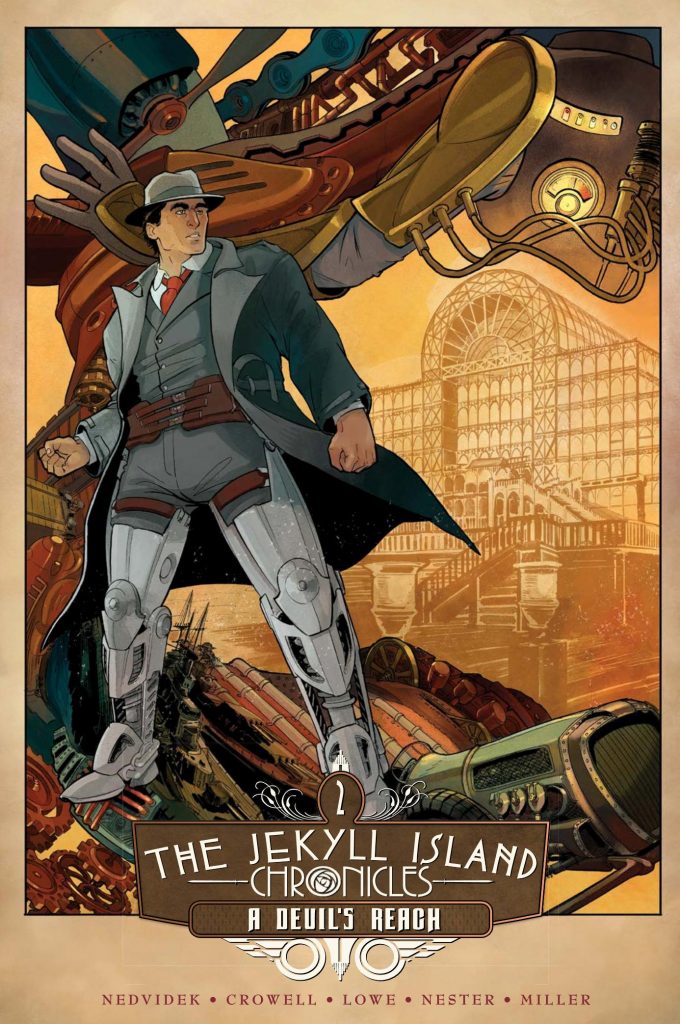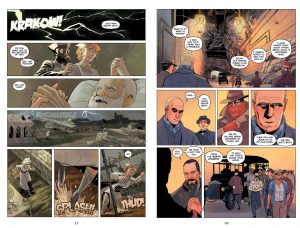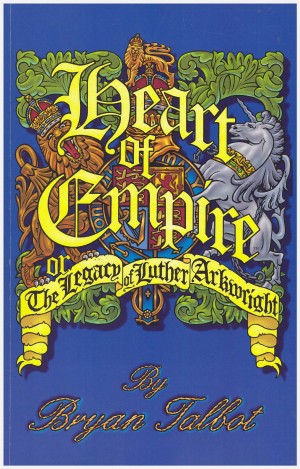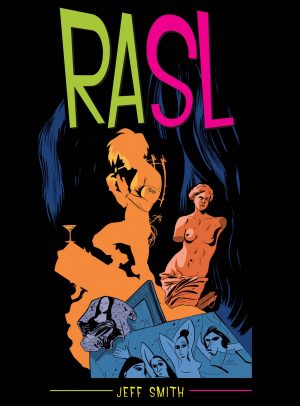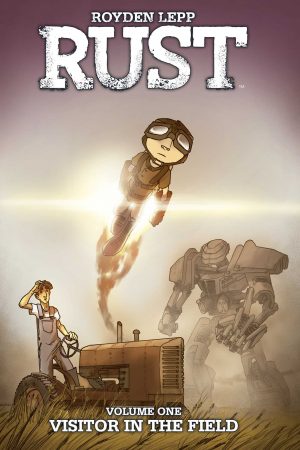Review by Frank Plowright
A Machine Age War introduced an alternative post-World War I world where the vision of Andrew Carnegie united extraordinary people with an array of talents, spurring technological progress. The writing team of Steve Nedvidek, Ed Crowell and Jack Lowe sprinkled fantastic events, futuristic engineering (for the era) and secret discussions around the real world history, primarily focussing on the USA. Rather than diving straight in here with Nikola Tesla having a crisis, a precis of that first volume would have been useful.
The main story picks up with the aftermath of anarchist atrocities on American soil in 1919, the President’s solution being wholesale deportation applied to people of European ancestry, identified as troublemakers. It’s an outrage playing into the hands of an organisation already seen wanting to stir trouble on a greater scale, and we subsequently tour around those who survived the events of the first volume. Some like Henry Ford are famous names, and some unknown in the real world have become celebrities here, like Peter Karovik, whose cybernetic legs and immense size make him a very recognisable figure.
Much that applies to the opening volume continues to be relevant. The writers have constructed an intriguing plot about an alternate world, but the rollout is very leisurely, and no amount of character art from J. Moses Nestor can disguise that an injection of pace is required. Jekyll Island Chronicles is structured as if a TV miniseries, whereas the needs of comics are different, and there’d be great benefits from shortening some conversations. Perhaps less avoidable is the coincidence of something happening whenever one of the lead characters visits somewhere. The dramatic licence is fine, but less transparency would be desirable.
More of the era’s famous people are introduced, and work well within the established story, and the writers wisely resist the temptation to highlight the negative personality traits of J. Edgar Hoover and David Lloyd George, presenting them with the respect they had in the early 1920s. As a series of episodes, A Devil’s Reach hits the spots, but the bigger picture is too rarely addressed as there is now such a vast cast. Nestor shows the wonder of the visually stimulating locations the writers select, but his people can be stiff. Much research has been carried out, and structures such as Cologne’s cathedral and London’s Crystal Palace are seen, the latter put to good use.
Eventually the pieces build to a confrontation, with several moments of deceit along the way, but while the characters race from one city to another, the sense of desperation they attempt to convey never really transmits. As with A Machine Age War everything remains at stake in the final scenes, yet the story continues as a score draw. The definitive conclusion arrives in A Last Call.
